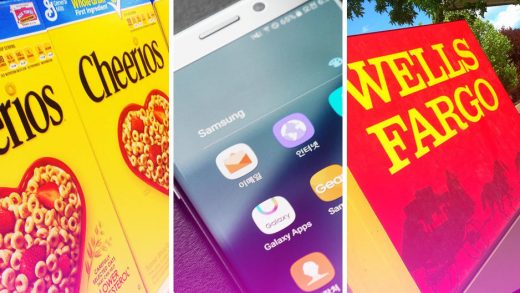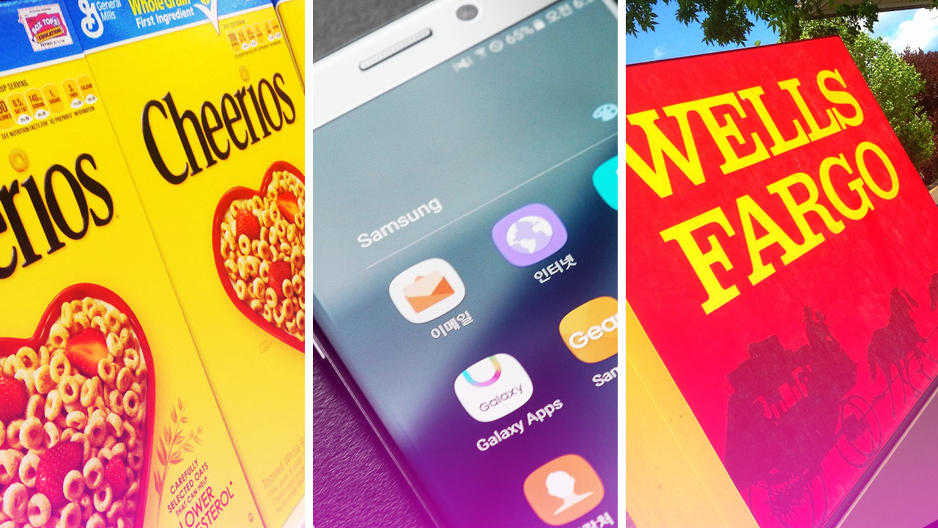Lessons From Three Of 2016’s Biggest PR Fails
2016 saw its fair share of corporate public-relations mishaps, but some were more cringeworthy than others. To be sure, the PR crises in certain cases weren’t all that bad compared with the serious business missteps that precipitated a few of them, but the fact remains that there is always a better and a worse way to talk to customers and the public when something’s gone wrong. These were three of the year’s most egregious gaffes, and what companies can learn from them heading into 2017.
Cheerios Learns A Lesson About Taste And Timing
As soon as Prince passed away on April 21 this year, the General Mills-owned and Minneapolis-based (the artist’s hometown) Cheerios tweeted an image of the words “Rest in Peace” on a purple background, with “#Prince” in the message. That probably would have been fine, but to put the brand’s stamp on it, the company dotted the “i” with a Cheerio. This extra touch set off mourning fans, who saw the tweet as an insensitive marketing ploy.
Lesson learned: Attempting to capitalize on a high-profile celebrity’s death rarely puts a brand in a positive light—it’s usually deemed tasteless. It was no different for Cheerios. Part of the issue here was the timing of the tweet, which arrived mere hours after Prince’s death was confirmed.
With fans still in disbelief, the perception was that Cheerios was hopping on the bandwagon to align itself with the artist. Few were probably aware that Cheerios was based in Prince’s hometown, so folks inside the company may have felt the loss just as keenly as his biggest fans, but that didn’t help perceptions. To the brand’s credit, when it had become apparent that the Twittersphere was upset over the post, Cheerios quickly removed it and released a statement explaining that the company had only wanted to “acknowledge the loss of a musical legend in its hometown.”
By that time, the damage was done; enough people had screencapped the image to repost with their displeasure. The bottom line is that when it comes to a national loss or tragedy, a brand is better off either expressing sympathy without incorporating any kind of commercial message, or just avoiding it altogether.
Samsung Pays The Price For Downplaying The Crisis
In mid-September, mere weeks after the release of its flagship Galaxy Note 7, Samsung began receiving reports of the smartphones catching fire while charging. Initial analysis pointed to overheating batteries, so the South Korean company suggested owners return the phone to where they purchased it for an exchange or refund, extending the crisis to carriers like Verizon and AT&T. When reports of fires continued even with the replacement devices, the brand decided to recall all Galaxy Note 7s and to cease production.
To be fair, that was a manufacturing crisis first and a PR crisis second, but the two became progressively intertwined as the mishap unfolded. While the tech company was relatively quick to respond to the situation, it made mistakes along the way, seemingly underestimating the scale of the problem.
Lesson learned: Samsung initially treated the crisis with kid gloves when it should’ve been much more direct and transparent. Its initial notification to consumers started as an easy-to-miss tab on its website. Given the severity of the situation (people’s safety at risk), it would’ve been much more appropriate and effective to feature this important news prominently on Samsung’s main homepage, and to send alerts to consumers on all of its social channels—which the company did only days later.
Second, Samsung mistakenly executed the recall without adhering to the U.S. Consumer Product Safety Commission’s guidelines, and issued a statement in Hong Kong to reassure customers that their phones were not subject to the same faulty manufacturing—only to retract it once this was discovered to be untrue. By acting passively and communicating misinformation, Samsung threw its brand reputation into question while the mobile division’s bottom line plummeted a whopping 96%.
The company could’ve minimized this blow by immediately distributing a holding statement to all stakeholders that acknowledged it was aware of the situation, cared for its users’ wellbeing, and was working to quickly to resolve the matter. It should’ve focused instead on getting the facts straight before pushing out erroneous information.
Wells Fargo Makes Things Worse By Pinning The Blame On Others
One of the largest and most trusted financial institutions in the world, Wells Fargo experienced what was arguably the worst crisis of the year—and botched it entirely. This, too, was much bigger than a backfiring tweet—it went straight to the heart of the bank’s business practices, on a huge scale.
But the PR mayhem all began when word broke that the bank was being fined $185 million for opening up to 2 million fake customer accounts. In response, CEO John Stumpf immediately blamed the 5,300 employees and allowed consumer banking head Carrie Tolstedt, who oversaw the unit responsible for the fraudulent behavior, to “retire” with a $125 million payout. And that was just the beginning of the national drama that followed, congressional hearings and all.
Lesson learned: Stumpf’s first mistake was assigning all culpability to the company’s worker bees as opposed to holding himself and other senior management accountable for these actions, which employees claimed they were pressured into by unrealistically high sales goals. The problem was clearly rooted deep in Wells Fargo’s culture, and the fix was going to require a closer examination of its corporate practices—starting with a sincere, public commitment to undertake it.
Instead, the CEO was slow to apologize, and when he did, it was while appearing before the Senate Banking Committee. By not admitting fault, blaming others, and showing little concern for its customers, Wells Fargo put its credibility and reputation in serious jeopardy—ultimately leading to Stumpf’s ouster (although he officially left willingly—with an estimated $130 million payout). While new CEO Tim Sloan appears to be handling the fallout much more transparently, it will be a long road ahead for the company to regain the trust of both its employees—some of whom are now suing the bank over their 401(k) plans—and customers. But like many big brands before it, Wells Fargo can pull through if it learns from its mistakes and takes effective steps to prevent them from recurring.
Those of us who work in the crisis-management world recognize that it’s not a matter of if a crisis will occur, but when. Virtually every brand, no matter how big or small, will one day find themselves in hot water for something. While each crisis can ultimately prove a teaching moment, the best first step any company can take is to be prepared.
Donovan Roche is VP, strategic services for Havas Formula, a top-ranked national public relations agency and subsidiary of Havas, one of the world’s largest global communications groups. He has more than 30 years’ combined experience in PR and journalism.
Fast Company , Read Full Story
(64)














